The Samsung Galaxy S9 and S9+ Review: Exynos and Snapdragon at 960fps
by Andrei Frumusanu on March 26, 2018 10:00 AM ESTCamera - Low Light Evaluation
We move onto low light shots. This is the part where we have large expectations of the S9 as the new wider aperture and multi-frame noise reduction processing promise great improvements in quality.
[ Galaxy S9 ] - [ Galaxy S8 ] - [ Galaxy S7 ]
[ Pixel 2 XL ] - [ Pixel XL ] - [ P10 ]
[ Mate 9 ] - [ Mate 10 ] - [ G6 ] - [ V30 ]
[ iPhone 7 ] - [ iPhone 8 ] - [ iPhone 8 Plus ] - [ iPhone X ]
In this scene again to give the best apples-to-apples comparison between the devices I shot the samples at different exposure modes, focusing on different parts of the pictures.
The scene was naturally very dark and the Galaxy S9 in auto mode did a good representation of this. However this is still too dark for actual picture usages on a monitor so focusing on a darker part of the scene brought up the exposure and details in the darkness. Against the S8 the S9 gains details in the shadows but otherwise the two phones post very similar processing with the S9 being in the lead.
In terms of the competition the Pixel phones are clearly the devices to beat here. Google is able to retain a lot more details in textures as the phones use far less heavy processing. This results in a noisier picture than the Galaxy S9 but I think it’s overall better because of the detail retention. The iPhone 8 as well uses less processing and sharpening, able to retain more of the natural textures of the scene, again, at the cost of higher noise.
Which phone is best will come down to preference as the different phones have different compromises. The S9 is sharp and bright with little noise, but loses on texture detail. The Pixels and iPhones are noisier but retain better the textures of the scene.
[ Galaxy S9 ] - [ Galaxy S8 ] - [ Galaxy S7 ] - [ Pixel 2 XL ]
[ Pixel XL ] - [ P10 ] - [ Mate 9 ] - [ Mate 10 ] - [ G6 ]
[ V30 ] - [ iPhone 7 ] - [ iPhone 8 ] - [ iPhone 8 Plus ] - [ iPhone X ]
In the second low-light scene we have another challenging scenario with a lot of dark area and a few highlights.
Here the Galaxy S9 dominates the competition as it produces by far the best results. The processing style is similar to the S8 however the S9 just produces more detail and less noise. Google’s Pixel devices did not do well at all in this shot and the result is a fuzzy noise picture even though light capture and dynamic range seems adequate. The Pixel phones did manage the best colour representation of the sodium lamps, although it doesn’t rescue the end result. The new iPhones do a good job, but it’s not enough against the Galaxy S9 or even S8.
The best contender against the S9 here is in my opinion the V30 as although it produces less light than the S9, it manages to retain a great amount of detail on the bridge, at least compared to all other phones. The V30 here also sees a comparison shot with the new “Bright Mode” that was introduced with a firmware update following the MWC announcement of the V30s. This allows for 2x2 pixel binning and increased light capture, but naturally with a resulting picture which has only 1/4th of the pixels and thus much less detail.
[ Galaxy S9 ] - [ Galaxy S8 ] - [ Galaxy S7 ] - [ Pixel 2 XL ]
[ Pixel XL ] - [ P10 ] - [ Mate 9 ]
[ Mate 10 ] - [ G6 ] - [ V30 ]
[ iPhone 7 ] - [ iPhone 8 ] - [ iPhone 8 Plus ] - [ iPhone X ]
The next scenic scene has a lot more lights scattered through the frame. The Galaxy S9 again noticeably improves the sharpness over the Galaxy S8 while retaining the same colour tones and overall processing. The Pixels didn’t do well in terms of colour balance and also have less detail than the S9 and iPhones. The new iPhones are indeed the contenders for second spot here as the iPhone 8’s and X beat the Galaxy S8 in terms of detail, but fall short of the S9’s capabilities. The V30 also did extremely well in preserving detail and noise, however like in the last scenario comes at the prices of darker shadows with less features.
[ Galaxy S9 ] - [ Galaxy S8 ] - [ Galaxy S7 ] - [ Pixel 2 XL ]
[ Pixel XL ] - [ P10 ] - [ Mate 9 ]
[ Mate 10 ] - [ G6 ] - [ V30 ]
[ iPhone 7 ] - [ iPhone 8 ] - [ iPhone 8 Plus ] - [ iPhone X ]
This scene with a lit statue even when looking close is hard to differentiate between the S9 and S8. The S9 does an ever so slightly brighter image and better detail retention, but the differences aren’t that big. The Pixel phones and the Pixel 2 in particular produce a much brighter image with the larger dynamic range, however this comes at a cost of lack of sharpness and more noise. The V30 follows the S9 in terms of overall exposure and in terms of details it seems a tie between the more processed S9 and the softer, but higher resolution of the V30. The S9 does better in the highlights. The iPhones do a brighter picture than the S9, but lose in terms of details and noise.
[ Galaxy S9 ] - [ Galaxy S8 ] - [ Galaxy S7 ] - [ Pixel 2 XL ]
[ Pixel XL ] - [ P10 ] - [ Mate 9 ]
[ Mate 10 ] - [ G6 ] - [ V30 ]
[ iPhone 7 ] - [ iPhone 8 ] - [ iPhone 8 Plus ] - [ iPhone X ]
The next scene follows the characteristics of the last one. The Galaxy S9 does ever so slightly better than the S8. The Pixels again retain more light but with a resulting fuzzy picture. The V30 and new iPhones are the real contenders to the Galaxy S9 with the V30 taking second place to the S9.
[ Galaxy S9 ] - [ Galaxy S8 ]
[ Pixel 2 XL ] - [ Pixel XL ] - [ P10 ] - [ Mate 9 ]
[ Mate 10 ] - [ G6 ] - [ V30 ]
[ iPhone 7 ] - [ iPhone 8 ] - [ iPhone 8 Plus ] - [ iPhone X ]
This scene is a lot brighter than the previous scenarios due to the street lighting, so the quality of the results should mostly fall onto the characteristics of the camera processing.
Between the Galaxy S9 and S8 we see the same overall picture exposure level. The S9 is able to achieve a higher dynamic range and less blown-out highlights of the street lamps thanks to its wider aperture and quicker exposure time, compared to the S8. While at first glance the pictures are similar, when looking at the details it seems as though the S9 regresses on the details compared to the S8. This is especially visible in the foreground objects such as the pavement or the shop front on the left. This loss of detail is less pronounced further in the middle of the image and down the street so I think what’s happening is that the S9’s shallower depth-of-field because of the wider aperture is working against its favour in this shot.
The Pixels again don’t retain enough detail so can’t compete against the S9 and S8. The iPhones showcase an extremely close exposure to Samsung’s phones. Apple’s devices are very close to the S9 in the foreground but lose out in detail further down when the S9 is in its optimal focal plane. The V30 produces an overall darker image, but this helps with preserving the highlights. In terms of detail it’s relatively even to the S9 but it depends on which parts of the picture are being compared as they have different exposures.
[ Galaxy S9 ] - [ Galaxy S8 ] - [ Galaxy S7 ]
[ Pixel 2 XL ] - [ Pixel XL ] - [ P10 ] - [ Mate 9 ]
[ Mate 10 ] - [ G6 ] - [ V30 ]
[ iPhone 7 ] - [ iPhone 8 ] - [ iPhone 8 Plus ] - [ iPhone X ]
The last scene is about sheer light capture and to see who resolves best the shadowy-details. In this scene the Galaxy S9 makes full use of its wider aperture and provides a lot more clarity and less noise than the S8. The Pixels do a gain a much better job at capturing the correct colour balance of the sodium lamps but, but again can’t compete in terms of detail. The V30 continues its trend of producing darker images which helps keep down noise and still retain a respectable amount of detail, however just can’t bring out features in the shadows. This leaves the new iPhones as the only contenders. Apple, similarly to Google, does a better job than Samsung in terms of colour temperature. When it comes to detail, the iPhone 8’s and X are more on the level of the Galaxy S8 and the S9 retains its lead.
Overall the Galaxy S9 provided the best low-light shots among the test smartphones through its ability to retain more detail. In dark scenes the S9 doesn’t have the same consistency issues that we saw in the day-light shots and I found the S9, similarly to its predecessors, to provide a good a repeatable experience. The advantages over the S8 will depend on lightning and scenery. In the worst low-light scenarios the S9 will hold a good lead over the S8, but in other scenarios when there’s a bit more light the differences are less pronounced. There’s some rare cases where the S9 could do worse than the S8 and that’s simply due to the nature of the optics and the shallower depth of field of the F/1.5 lens.
In terms of competition, I think Apple’s new iPhones are overall the most competitive against the S9 in low-light and showed the best balance across the shots. Google had the best low-light colour balance, but in some scenes just had too much noise resulting in fuzzy images. Huawei in general had a tough time competing and their monochrome sensor solution just didn’t work out. LG’s phones were very good as well however Samsung edged them in in detail.


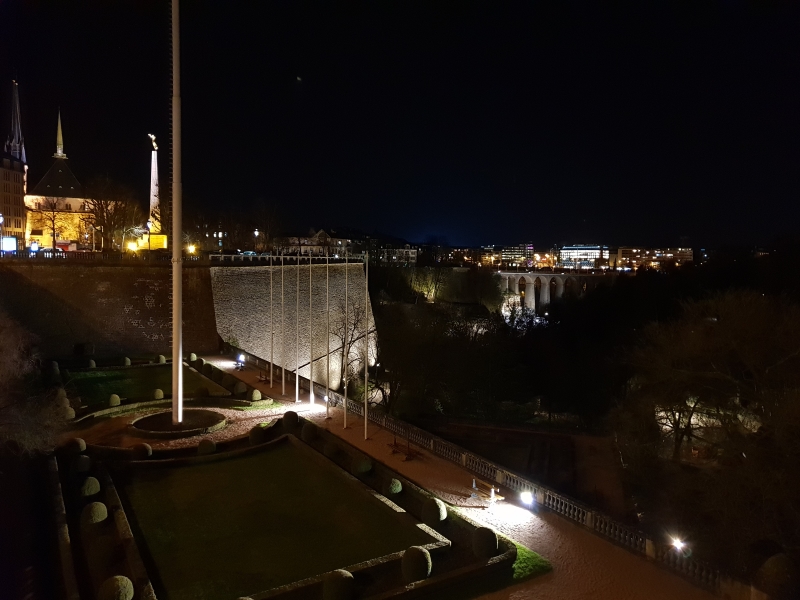




















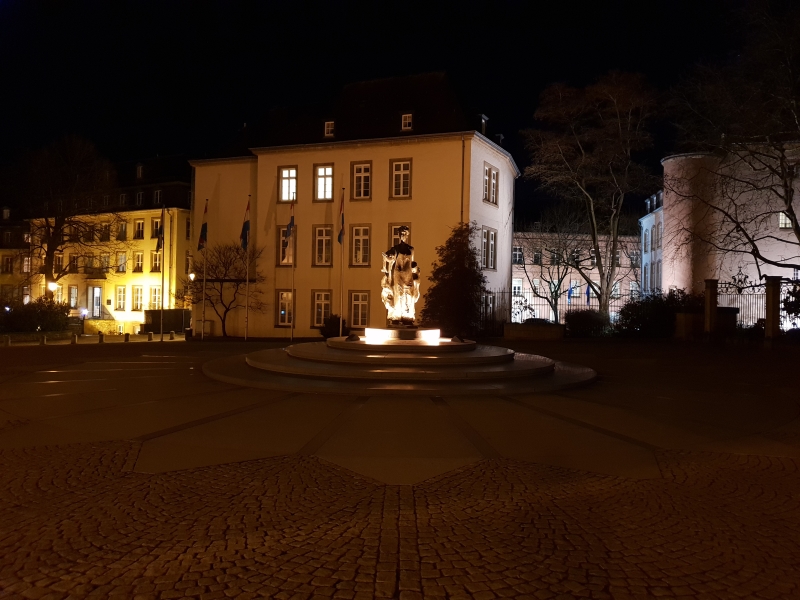






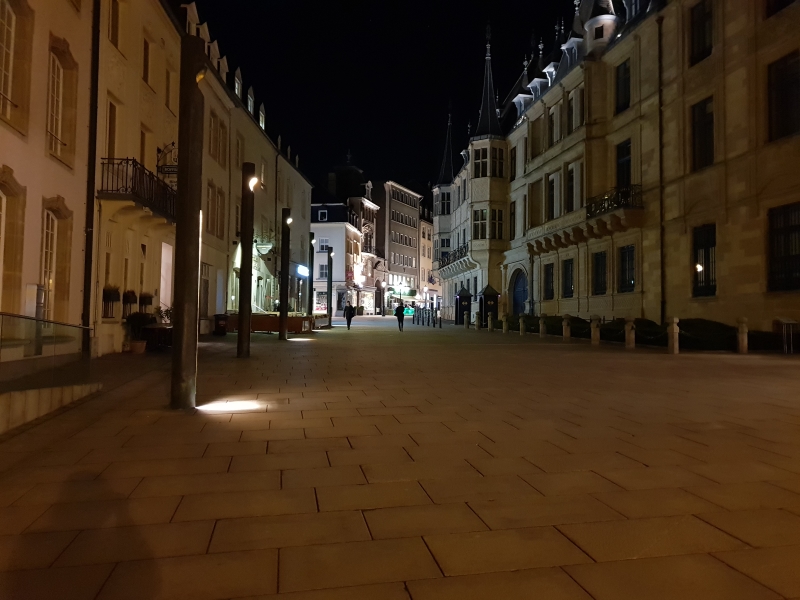






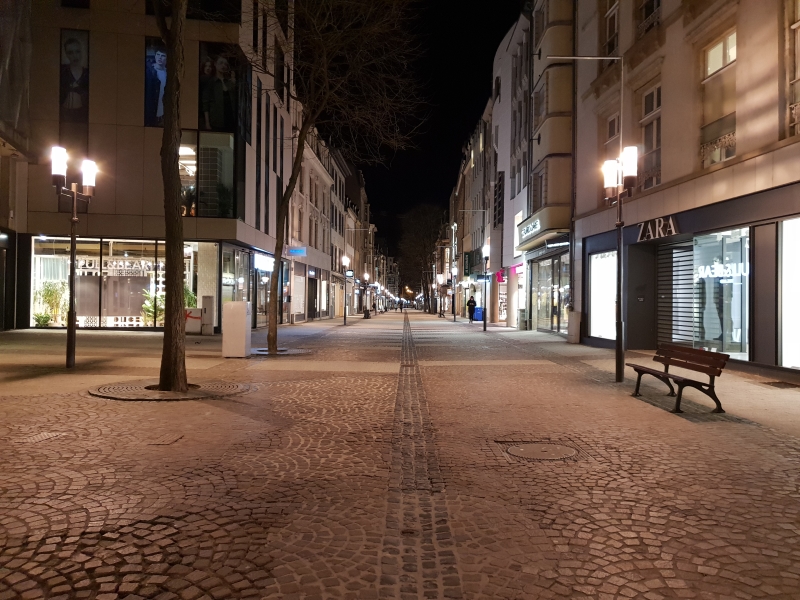






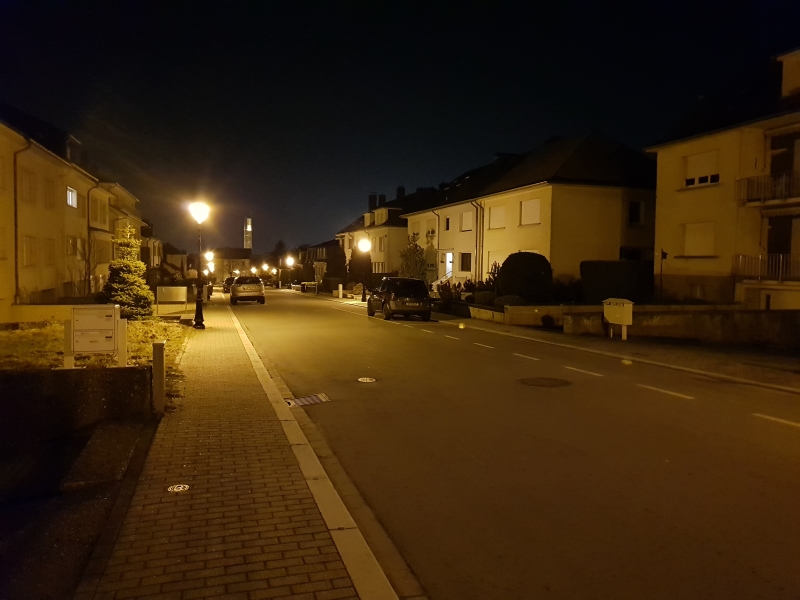














190 Comments
View All Comments
robertkoa - Tuesday, July 3, 2018 - link
Yes. Has a great built in battery monitor that puts apps to sleep but they become immediately available.Also Location OFF unless using GPS ...Avoid having Apps and Sites give you notifications.
Avoid unnecessary extra tabs opened.
Screen brightness at 30% indoors.
I squeeze a lot of SOT on 4GLTE 6 hours browsing 40 minutes of calls 40 minutes of Youtube 20 minutes of emails on a charge.
Have not used Camera for a long time yet.
8 to 9 hours SOT.Qualcomm S9 USA not sure what people are doing who get half this.
I AM afraid to download the new .75GIG software update...why do they need .75GIG for security patches...?
Larger Operating System with constant security in deep background APPS could kill my battery life ...
peevee - Thursday, April 5, 2018 - link
WOW, A55 cores are so tiny compared to M3, one M3 cores takes as much silicon as 8 A55 cores. In the same amount of silicon, they could have had 1 M3 core and ~28-30 A55s. It would be just as fast in single-thread tasks but much faster AND more energy-efficient in multi-thread ones.peevee - Thursday, April 5, 2018 - link
Do I see it correctly that good old 820 is both most efficient and one of the fastest in most cases? Such a degradation!peevee - Thursday, April 5, 2018 - link
"we see the Snapdragon 845 within spitting distance of the Snapdragon 835’s energy usage throughout most of the workloads, sometimes winning and sometimes losing"Where 845 is winning in energy usage? What are you talking about? Either something is wrong with your graphs (color coding?), or 820 is significantly better than 835 which is significantly better than 845.
mkstowegnv - Thursday, April 5, 2018 - link
Thank you for putting all the work into this valuable review. But. You did not talk about GNSS - GPS, GLONASS, etc. (and AT has not had a story involving GNSS for 5 years). You can only do so much and it is another world of expertise, but it would be particularly valuable to look into GNSS for this phone. 2018 was supposed to be the year of phones with multifrequency GNSS leading to centimeter accuracy (and more to the point for the average user much better and faster performance in urban canyons, thick forests and other unfavorable environments and times). Broadcomm's BCM4775x series of L1, L5 chips was going to make this happen (but they have remained mum about which phones would use the chip). The problem is that Qualcomm SOCs are unlikely to incorporate their archrival's products, and all the leaks and previews of all the flagship phones for the next year indicate Qualcomm Snapdragon SOCs. Huawei uses non-Qualcomm but their just released p20 uses the previous generation, L1-only Broadcom chip. The only BCM4775x phone that anyone has seen and maybe the only one for the forseeable near future is the Exynos version of the S9+ which Techinsight's teardown and XDA hackers confirm has the BCM54772. It was not announced or documented by Samsung, and XDAers still don't know if it is picking up the L5 signal in an accessible way. What heroic figure(s) could possibly measure and compare GNSS accuracy in recent phones and possibly hack the Exynos S9+ to use L1 and L5 and get the best accuracy?KD323 - Thursday, May 17, 2018 - link
Thanks for the writeup! By the way, what do you think of these wooden phone cases for S9/S9 Plus?https://kaloadesigns.com/collections/galaxy-s9Peaches - Sunday, May 27, 2018 - link
Does these tests mean, that The E9810 with The CPU-Limiter from The Power Saving Mode activated , is as fast and more efficient than The E8895? BTW:awesome test and i love Hose detailed and fact-based you are.Taleim - Wednesday, May 30, 2018 - link
I hear that the may update improves battery life, any chance of running the tests again? CheersLodestone - Thursday, August 30, 2018 - link
Same here. Would greatly appreciate if you could run the exynos battery tests again to see if updates have improved the problem.CyberRain - Wednesday, August 8, 2018 - link
How to Catch a Cheating SpouseIt offers you not only to view the files on the device, but also download them on your personal computer.
The tool gives you absolute anonymity. Your spouse will never find out you spy on his/her cell phone.
There is no need on possessing the target device. You can spy on your Spouse remotely. The entire process does not need any physical access.
contact: Mobile Hack Expert